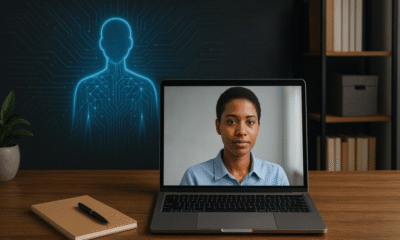Thought Leaders
2021 and Beyond: Creating Better Work Spaces with Computer Vision

The year 2020 was defined as much by what didn’t happen as what did: Virtually no in-person schooling, no getting together with friends or colleagues for happy hour, no graduation parties, and no business conventions.
But hidden among this massive societal deprivation were a few silver linings. Working remotely meant flexible schedules, more time with family and fewer cars on the road, which led to bluer skies and lower carbon emissions—and perhaps most importantly, a chance to step back from the status quo and think about a future that isn’t just different, but better.
As companies reexamine their employee work policies in light of the pandemic, they have the opportunity to reimagine their physical spaces. For example, Dropbox has developed a “Virtual First” model, complete with a rebranded campus (“Dropbox Studios”) that will be dedicated to collaborative, cooperative work projects. There will be no assigned desk or office space because all “focused, solo work” is expected to happen at home or in a co-working environment.
Dropbox CEO Drew Houston says that the Virtual First model is currently at a policy or guideline level. Once the company returns to a hybrid work environment (slated for some time in June of this year) they’ll take an iterative, experimental approach to applying these guidelines and creating what he calls a “more enlightened way of work.”
A recent survey of hiring managers by Upwork suggests that in five years, more than 60 percent of companies will have returned to working in the office, and Dropbox is just one of many that are reimagining what that will look like.
Rethinking the use and management of physical space
But reimagining how we use the physical space doesn’t end with being smarter and more thoughtful about how we use the space itself, or how often we use it. It must also include taking a more responsible approach to managing the facilities. After all, why clean a room every single night, if it’s not getting used to capacity? And why put heating & cooling on a timer every day when there are more efficient ways that could decrease your energy bill and reduce carbon emissions?
Despite a nearly nine percent reduction in carbon emissions last year due to the pandemic, September air pollution readings at measurement stations in Hawaii and Tasmania were still trending upward on a year-over-year basis.
In response, one of the key priorities of the Biden administration is taking “swift action to tackle the climate emergency,” by rejoining the Paris Climate Agreement and pledging to reduce the carbon footprint of U.S. buildings by 50 percent by the year 2035 through the retrofitting of some four million buildings across the country.
It’s an ambitious plan, and many other people are showing a similar sense of urgency—perhaps most notably being Bill Gates, with the recent release of his book “How to Avoid a Climate Disaster,” which provides a “practical plan” for getting to net zero emissions. Last summer, Gates outlined three takeaways about the topic on Gates Notes, his personal blog: 1) Let science and innovation lead the way, 2) Make sure solutions work for poor countries, and 3) Take action now.
Striving to be digital and operationally resilient
The commercial real estate (CRE) industry has a tremendous opportunity to follow through on two of these points, specifically by taking action and innovating through a better use of technology. In a survey of commercial real estate executives, Deloitte found that 56 percent had discovered shortcomings in their digital capabilities during the pandemic, and only 40 percent had a defined digital transformation roadmap” in place.
It should come as no surprise, then, that Deloitte’s recommendations for 2021 include “strive to be digital … Rapid digital transformation will likely be needed to build operational resilience, maintain a strong financial position, develop and retain talent, and create an enabling culture.”
This means that CRE players must focus as much on operating the physical plant—HVAC, plumbing, and other utilities—as they do on the use of the physical space.
Until recently, they had no way of generating the kind of data and insights needed to drive informed decisions about their physical space. But now, with the availability of machine learning, on-the-edge and cloud-based data analytics, high-performance graphics processors, and smart cameras and devices, companies can easily retrofit their buildings with computer vision (CV) solutions. These solutions can help generate insights about a tenant’s space, and the people who use it, from how many people go through the front door and when, to the population density and flow of people throughout the day, and when the last person leaves the building.
Innovating physical space with computer vision
Using CV, building managers and space planners can make critical upgrades to a building’s physical spaces— installing smart building capabilities such as mask and occupancy detection solutions, and lighting & climate control solutions that could generate an average of 18 percent savings, according to the American Council for an Energy Efficient Economy. Most commercial buildings still use a schedule-driven or rules-based approach for their environmental controls, or rely on sensors that have a built-in lag time, leading to sub-optimal energy savings performance.
CV-powered solutions generate data in real-time, enabling you to more quickly adapt to changes in traffic flow and population density. And by integrating that data with existing smart building solutions you can create a more comprehensive understanding of tenant activities and more efficiently manage physical spaces. (Of course, the same benefits apply to virtually any other business working in a built environment.)
Clearly, the pandemic has yet to run its course and the impacts, long-term and short, have yet to be felt or fully realized. But that doesn’t mean we can’t take advantage of this lull in office life, start thinking about what a better office space might look like, and more importantly, how we can more responsibly manage our physical space.












